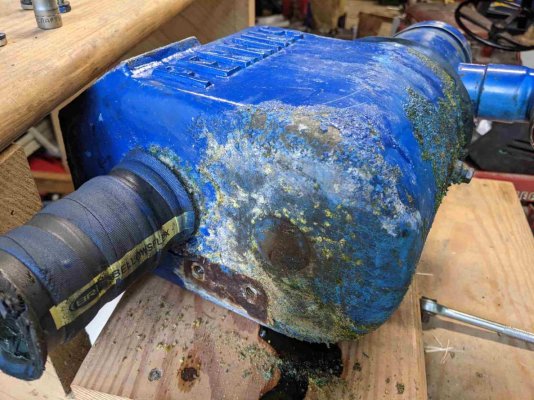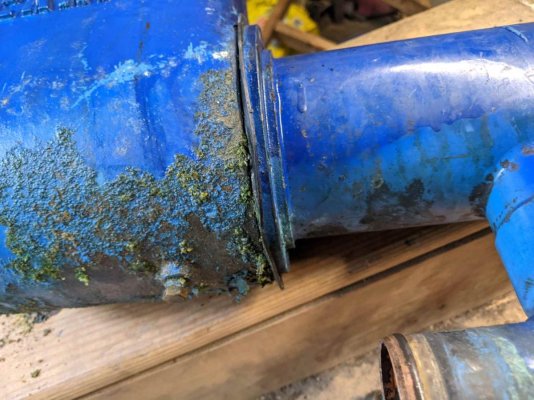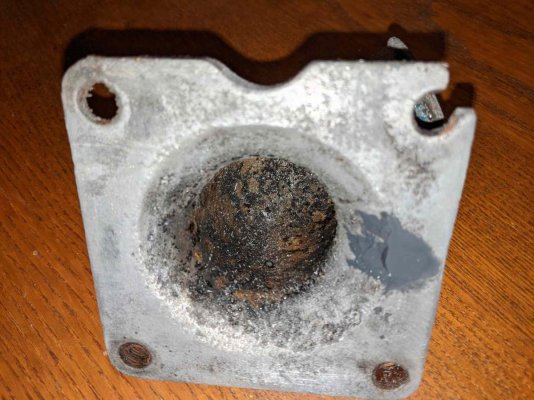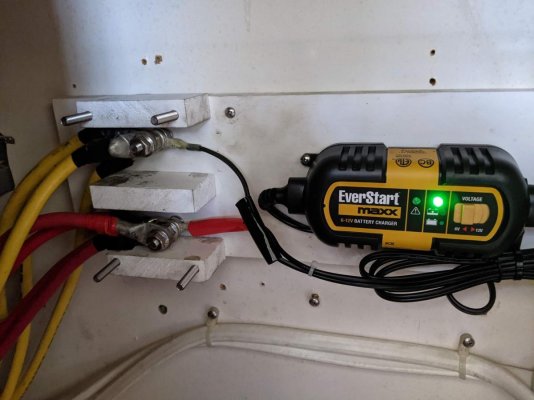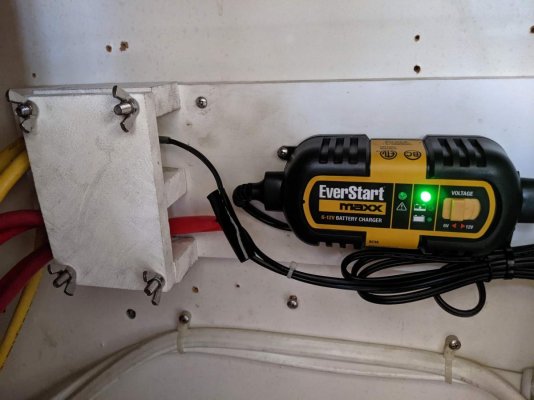We have been getting a fair amount of use of the boat and overall it has been running well. Since fixing the loose transmission output flange, the transmission has been retaining it's fluid, the engine oil level is stable (it was never losing oil but the SAE30 fluid leaking out of the transmission made me suspect some oil was coming from the engine), it has small leaks from the valve cover and probably a bit from the oil pan gasket but negligible amounts, I've added about 1 quart of oil all summer.
I do need to clean up and reseal my perko sea strainer, the gasket on top developed a leak and allowed air to be sucked in, starving my raw water pump and nearly overheating the engine. I made a gasket for the top whch solved the immediate problem but the whole thing needs to be disassembled, cleaned up and reassembled with the proper gaskets and a new plastic cylinder. I should have done earlier because the whole thing is green and ugly. I finally ordered the gaskets and cylinder.
Our longest trip of the season went pretty smoothly, only 4 hours away to Cambridge but still a milestone is gaining confidence in the drive train.
My oil pressure stays higher when I can keep the coolant temps at 175 or less, I'm going to switch to 20W-50 on my next oil change and also work on getting my raw water hose transitions a little smoother (slightly kinked at some molded 90's) in hopes of being able to run at or above 2k rpm and below 180 degrees coolant temp. I think soaking my exhaust manifold and intercooler with barnacle buster is in order as well.
I've been getting out to fish a little more often, with mixed results, hopefully the fall will provide some decent rock fishing, it can be hit or miss.

